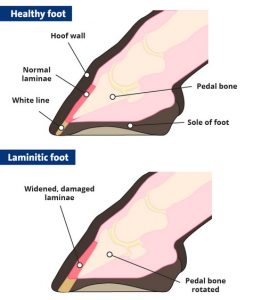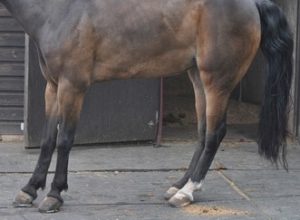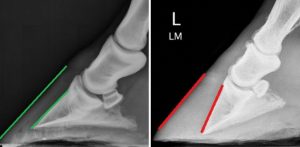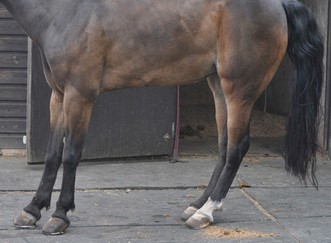Laminitis
Speaking with our vet recently she said that this year had been particularly bad for horses suffering with laminitis. This has been due to the warm and wet weather, perfect weather to grow lush grass.
What is Laminitis? Laminitis is a common, extremely painful and frequently recurrent condition in horses, ponies and donkeys. It has significant welfare implications for owners. This condition affects the tissues (laminae) bonding the hoof wall to the pedal bone in the hoof. This can result in the pedal bone sinking or rotating within the hoof under the weight of the horse. In extreme cases, this can result in penetration of the sole of the foot by the pedal bone.
Obesity is a significant and important risk factor for developing laminitis. In addition, carbohydrate overload can cause a horse to develop laminitis. This can occur when a horse consumes lush pasture with a high sugar content, or when a horse is fed (or breaks into the feed room and gains unlimited access to) excess grain.
 Clinical Signs of Laminitis
Clinical Signs of Laminitis
- Lameness affects most commonly at least two limbs, some horses get very mild laminitis that is not severe enough to cause any visible lameness but does result in divergent hoof growth rings.
- The horse leans back onto its heels to take the weight off the painful toe area
- The lameness is worse when the horse walks on hard ground or turns
- Shifting weight between feet when resting
- Increased digital pulses
- Pain with the use of hoof testers at the point of the frog on the foot
What should you do if you suspect your horse has laminitis?
After calling your vet, bring your horse into a stable that has deep shavings covering the whole stable floor. Provide plenty of fresh water and feed your horse-soaked hay. Your horse will probably be on extended box rest and the vet will normally prescribe painkillers.
Your vet may also advise X-rays if there are concerns the pedal bone has sunk or rotated, or if your horse is not improving despite appropriate therapy. Depending on how bad the laminitis is your horse may need therapeutic trimming and shoeing.
horse may need therapeutic trimming and shoeing.
The laminae are interwoven, sensitive ‘leaves’ of tissue which suspend the pedal bone within the hoof. Laminitis is inflammation of these laminae which weakens them and can result in sinking or rotation of the pedal bone.
Once your horse has laminitis, they will always be at risk of getting it again so keeping a laminitic horse at a healthy weight is crucial and minimises the stress placed on the sensitive structures in the hoof. Caution should be taken when considering allowing a laminitic horse access to pasture, especially during high-risk times such as spring and late summer when grass tends to have a higher sugar content. Vets will often recommend turning horses out with a grazing muzzle or keeping them off grass altogether.
Sadly laminitis is irreversible.

